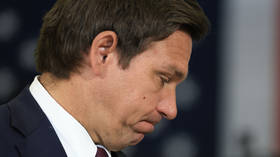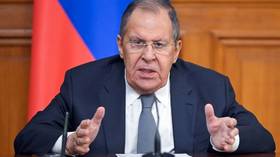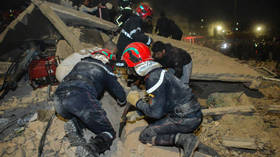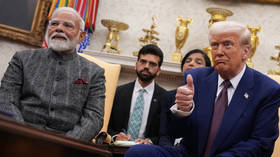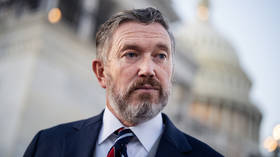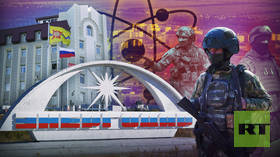Police brutality UK-style: The tragic case of Kingsley Burrell

In March 2011, Kingsley Burrell called the police requesting help, fearing he and his son were at risk from an armed gang. By the end of the day, Burrell had been arrested, beaten and had his son taken from him. Four days later he was dead.
Since then, it has been a long, hard struggle by Kingsley’s
family and friends to find out the truth about what happened -
but last month, during an excruciating five-week inquest, that
truth finally came out.
When they arrived on the scene and found no evidence of anyone
threatening Kingsley, the police decided to arrest him under
Section 136 of the Mental Health Act, claiming he was delusional.
Both he and his son were taken away in an ambulance, where the
police set upon Kingsley in an attempt to forcibly remove him
from his son. During the inquest, it emerged that Kingsley had
not been asked to relinquish his son before police attacked him.
One officer admitted in typically guarded language: "I accept
that to communicate to everybody, in an ideal situation, that
would have been done."
Kingsley was then driven to the Oleaster mental health unit of
the local hospital and later transferred to another mental health
facility, the Mary Seacole Unit. What exactly happened to him
during this time is unclear, but his sister Kadisha visited him
in the unit the following day, telling the inquest "Kingsley
had three lumps, one on his forehead. I said to [his partner]
Chantelle 'take a photo of that'.”
“Kingsley said to me, ‘I can’t move’. He couldn’t move the
upper part of his body… He couldn't move his head, couldn't move
his body, couldn't move his shoulders,” she said, adding he
had deep marks around his wrists. She later discovered that her
brother had been left handcuffed to the hospital floor for five
or six hours, had not been allowed a drink of water or a visit to
the toilet and was subsequently left to urinate on himself. He
told her that after he requested the handcuffs be loosened the
guards tightened them even more.
READ MORE: Undercover police evidence withheld by prosecutors, cleared protesters compensated
On March 30th, police were called back to the Mary Seacole Unit
after staff there reported he was acting aggressively; when
pressed for more detail in the inquest it transpired that he had
been making ‘stabbing motions’ with his toothbrush.
This was apparently all the excuse the police needed to launch
another blistering attack on the man they had left barely able to
walk just three days previously. Kingsley over the course of the
next two and half hours was again beaten, this time whilst
sedated, handcuffed and in leg restraints. During this time, he
was transferred by police to the Queen Elizabeth hospital, first
to emergency to stitch up a head injury he had sustained during
the course of the restraint, and then back to the Oleaster Unit
of the hospital. During the ambulance journey, a towel was
wrapped around Kingsley’s head; when asked why, it was explained
that it was because he had been spitting. The restraints were
finally removed on arrival at the Oleaster seclusion unit. A
staff member present told the inquest that whilst removing the
restraints, one officer “knelt on Kingsley’s back between his
shoulder blades” whilst others punched his thighs “with
a lot of force,” including with the butt of a police baton.
He noted: “These were methods that I had never seen
before—they were alarming and shocking.” He explained how
the police then left Kingsley face down on the bed with the
blanket still wrapped around his head. He was motionless.
During this time, Kingsley’s respiratory rate had been dropping;
since he was coming out of sedation it should have been rising.
The inquest revealed that this drop had been noted but not acted
upon on several occasions. Even when it dropped to below half the
usual rate, there was apparently “no urgency” about the
situation.
Eventually, Kingsley went into cardiac arrest. Community activist Desmond Jaddoo’s blog of the inquest hearings records what happened next: “This afternoon we heard from the Doctor who was on call when Kingsley went into cardiac arrest and it was a complete case of confusion, as she claims that she was told to go to the wrong ward and when she arrived there, there were no compressions being done and they placed him on the floor for a solid surface for compressions. Furthermore, we went on to hear the wrong breathing mask was used initially, along with the defibrillator not having any pads and there was a delay whilst an alternative one was obtained from a different ward.”
READ MORE: Mark Duggan family: Firearms officers ‘protecting’ gun sellers, policing inquiry needed
Kingsley Burrell was pronounced dead the next day. Last month,
the five-week inquest concluded that the police had used
excessive force and contributed to his death, as did the covering
left over his head, and the neglect he so clearly suffered. It
was a damning indictment not only of the police, but also of the
various mental health workers and ambulance staff who allowed the
brutal treatment to continue, and of the Crown Prosecution
Service who refused to prosecute anyone over the death. Had the
coroner allowed ‘unlawful killing’ to be considered, it is quite
possible the jury would have reached this verdict.
Following the verdict, the all-too-familiar refrain of “lessons
learnt” began to emanate from all corners of officialdom. Coroner
Louise Hunt pronounced: “The only consolation to family
members is lessons can be learnt from such a tragedy.” West
Midlands Police Assistant Chief Constable Garry Forsyth said,
“Crucial lessons have been learned from this tragic case and how
the force manages people who are detained with mental and
physical health needs.” Police and Crime Commissioner David
Jamieson told the press: “Clearly more lessons need to be
learned by all the agencies involved so that these tragic
incidents are not repeated.”
This is the same refrain that is churned out every time somebody
dies while in police custody. Time and again, families are forced
to battle for the truth, often for years, against all the odds -
but when that truth is revealed, and the states’ culpability in
the death of their loved ones is revealed, the state refuses to
administer justice. Instead, it calls for ‘lessons to be
learned,’ as if police officers beating a man to death is akin to
a schoolboy failing a math test. As the chair of the Kingsley
Burrell justice campaign Maxie Hayles commented, “We are
constantly told that 'lessons are being learned.' The black
community is totally fed up with hearing this rubbish. It’s
almost like we are an experimental project.”
The truth of the matter is that, precisely because justice is
never done, these ‘lessons’ are never actually learned. The
Institute of Race Relations published a report into deaths in
custody in March of this year, examining over 500 black and
minority ethnic deaths in custody that have occurred in the UK
since 1990. Their report noted that “despite narrative
verdicts warning of dangerous procedures and the proliferation of
guidelines, lessons are not being learnt: people die in similar
ways year on year.”
READ MORE: Mark Duggan shooting: Officer cleared of ‘any wrongdoing’ amid police cover-up allegation
Indeed, every aspect of the Kingsley Burrell case is depressingly
familiar to campaigners on police brutality. Every single element
of ‘what went wrong’ had already contributed to previous deaths
on several occasions, and everyone has already, we have been
told, resulted in ‘lessons being learnt,’ long before Kingsley’s
fateful call to the police in 2011.
One such lesson is the lesson of ‘institutional racism’. This was
the term used in the 1999 MacPherson report into the death of
teenager Stephen Lawrence, which concluded that the police
mishandling of that case was a result of the institutional racism
of the Metropolitan Police. This racism results in the black
community being “under-policed as victims and over-policed as
suspects” in the memorable words of campaigner Stafford
Scott, with racial stereotyping leading both to the excessive use
of force against black people and an assumption that they are
deviant.
Despite the ‘lessons learnt’ from the Lawrence case, both factors
clearly played a role in Kingsley’s death. PC Shorthouse, a
six-foot-four tall police officer involved in Kingsley’s death,
told the inquest that his “knees were knocking together” in fear
of dealing with Kingsley, prompting the family’s lawyer to ask
him: “Are you sure you were not applying the stereotype of
Kingsley being mad, black and dangerous?” “No, not at all,”
Shorthouse replied. “He was the strongest, most aggressive
person I have ever met in my career as a police officer.”
Perhaps. But one wonders how much aggression Kingsley was meting
out whilst sedated with his arms and legs strapped down, or
whilst being beaten face down and motionless on a hospital bed.
Another explanation for the incident was put forth by the
Institute of Race Relations in their examination of similar
cases: “Black men, especially young black men, acting
erratically or even asking for help, are stereotyped first and
foremost as bad, mad, and, being black, likely to be involved in
drugs and/or violent – so they are met with violence.”
Even when victims display clear warning signs of being in serious
danger, police often ignore them on the grounds they believe
their victims are “faking it.” As Shorthouse told the
inquest, he assumed that Kingsley pleading with him that he
couldn’t breathe was “tactical.” Such assumptions were
also fatal in the cases of Sean Rigg, Christopher Alder and Habib
Ullah, as well as many others.
Yet this ‘lesson’ - that institutional racism and racial
stereotyping is dangerous and can even be fatal - is one that had
supposedly already been learnt from the MacPherson report in
1999. Just for good measure, it was ‘learnt’ again in 2006 when
an IPCC (Independent Police Complaints Commission) report
concluded that “unwitting racism” contributed to the
death of Christopher Alder – a very generous finding given CCTV
footage appeared to show the officers standing around making
monkey noises whilst he lay dying – and that four of the officers
present when Alder died were guilty of the "most serious neglect
of duty."
Another lesson not being learnt is that, when it comes to holding
the state to account, the Crown Prosecution Service (CPS) is not
fit for purpose. In 1999, the Butler Report – an official
government inquiry into deaths in custody – was seriously
critical of the CPS’s obvious unwillingness to prosecute police
officers. Yet given the behavior of the CPS in subsequent years,
the report may as well have never been written. Even when
verdicts of unlawful killing are reached, as the IRR has noted,
“there has still been a marked reluctance to prosecute those
implicated.” The number of prosecutions resulting from the
509 suspicious custody deaths detailed in their report can
literally be counted on one hand – and even where prosecutions
are brought, they are not done so effectively.
READ MORE: ‘Black lives matter’: Clashes as thousands of Londoners protest police racism (VIDEO)
Following years of campaigning by Alder’s sister, Janet, the CPS
did eventually bring a prosecution of the officers involved in
Christopher Alder’s death.
However, the CPS then conflicted much of the evidence, meaning
the judge had to throw it out, with the most damning evidence -
the CCTV footage - never presented to the jury. Janet then
brought a civil case against the CPS, in which the judge
concluded that she shared Janet’s concerns “as to the
standard of the investigation undertaken by West Yorkshire Police
into the actions of the Humberside officers.” No surprise
then, that the CPS decided last August not to prosecute the
police officers implicated in Kingsley Burrell’s death, leading
to a protest by the Burrell family and their supporters outside
its Birmingham headquarters. Lessons learnt?
The list of lessons that should already have been learnt is
endless. Another lesson concerns “positional asphyxia” –
suffocation due to a person’s body position blocking their
airways. The IRR report shows there have been at least nine cases
of deaths in police custody where ‘positional asphyxia’ was
identified as a cause of death since 1990. ACPO guidance, says
the IRR, already “makes clear that placing suspects in a
prone position….gives rise to the risk of death by positional
asphyxia and the prone position must be avoided if possible, and
minimized if unavoidable. It also recommends that body weight
should not be used on the upper body (ie sitting on a suspect) to
hold down a person.” This lesson was supposedly ‘learnt’ in
the 1990s. Yet it did not stop the officers involved in Burrell’s
case from ignoring the advice, putting him in prone position and
leaning on his chest, causing the positional asphyxia which led
to his cardiac arrest – just as predicted by ACPO’s guidelines.
If the British state really is being ‘taught lessons,’ it must be
a seriously retarded pupil.
Another lesson that should by now be well understood is that “excited delirium” is a medically dubious diagnosis routinely wheeled out by dodgy police pathologists desperate to avoid verdicts of positional asphyxia at inquests. Refuted by the vast majority of medical experts, this did not stop police pathologists bringing it up both at Kingsley’s inquest, and at the inquest of Habib Ullah earlier this year.
At least the pathologists are giving distorted interpretations of
the facts, however, rather than simply making them up. Another
lesson is that it is not only racism that is apparently
institutional in the police force – so too are cover-ups and
lying. Last week, hearings for gross misconduct began against
police officers involved in the death of Habib Ullah, all five of
whom heavily doctored their witness statements to the IPCC about
what happened, removing references to the use of force used, to
other witnesses on the scene, to warning signs of his
deteriorating condition and much else besides.
As Gerry Boyle, presenting the case against the officers, said:
“The nature and extent of the deletions and amendments these
five officers made were on a breathtaking scale, covering almost
every single aspect of the incident.” (Needless to say, the
CPS dismissed the IPCC’s suggestion that those involved be
charged with perjury and various other charges). At Kingsley’s
inquest, a similar pattern emerged. The testimony of PC Adey and
ambulance driver Mr MacDonald-Booth were particularly shameless.
Various witnesses had testified that, after his restraints were
taken off, Kingsley’s arms dropped to his sides and he never
moved again. "I know what I saw” PC Adey said, “he
raised his head.” Incredulous, the coroner replied: "I
suggest you are wrong, officer."
In an earlier statement, Adey said he had seen this through a
window in the door. But it emerged in the inquest that this
window was covered by a locked hatch to which only nurses had the
key. Adey also insisted that Kingsley’s face was uncovered,
contradicting evidence from six other witnesses that his face was
covered with a towel or sheet. “How can they all be wrong,
officer?” asked the coroner, showing him CCTV photographs of
Kingsley’s head covered. He said he wasn’t looking at him at the
time. Adey also denied kneeling on Kingsley’s back, as had been
described by two other witnesses.
The coroner, Louise Hunt, also became exasperated with Mr
Macdonald-Booth, the ambulance driver, whose testimony in the
inquest directly contradicted his own earlier statements. Mr
MacDonald-Booth, it turns out, had only recently joined the
ambulance service, having previously been – any guesses? - a
police officer.
We were told ‘lessons had been learnt’ from the Hillsborough
disaster, where police had systematically lied about the 96
football fans killed as a result of poor policing in 1989; we
were told the same about the miners’ strike – where police had
systematically lied about those they arrested at Orgreave; and
again after “Plebgate”, when police officers had lied about what
they heard Andrew Mitchell say in Downing St. Lessons learnt?
Kingsley’s inquest suggests otherwise.
Yet lessons are being learnt. The real lesson – being taught
again and again - is that impunity prevails; that, if you are an
agent of the British state, you can falsify your evidence, you
can lie in court, you can attack people from vulnerable or
minority groups at will, and whatever happens – even if you kill
them – that state will protect you. We don’t need any more
lessons to be learnt; indeed we have had enough of this lesson
being learnt. What we need is for justice to be done.
The statements, views and opinions expressed in this column are solely those of the author and do not necessarily represent those of RT.
The statements, views and opinions expressed in this column are solely those of the author and do not necessarily represent those of RT.



